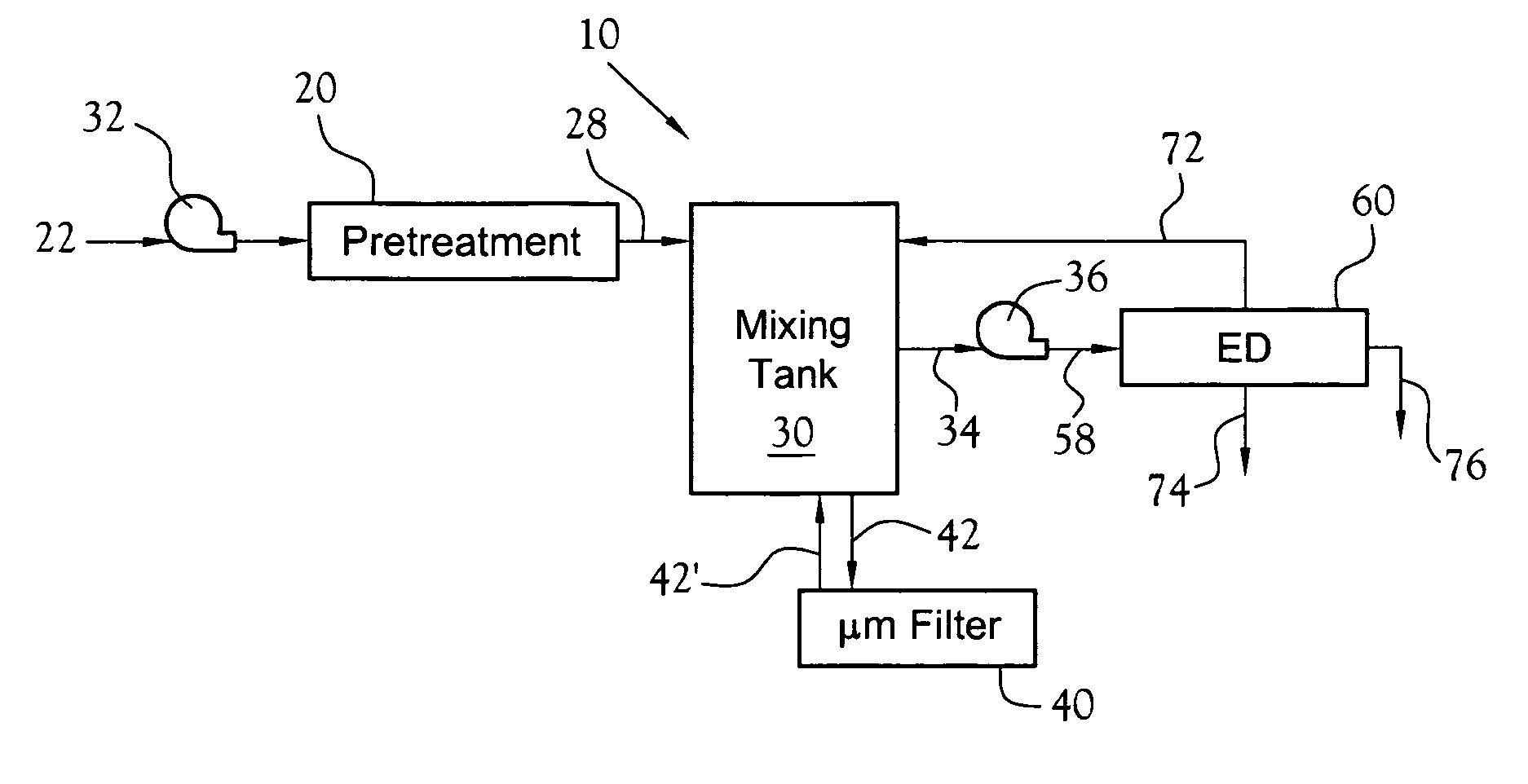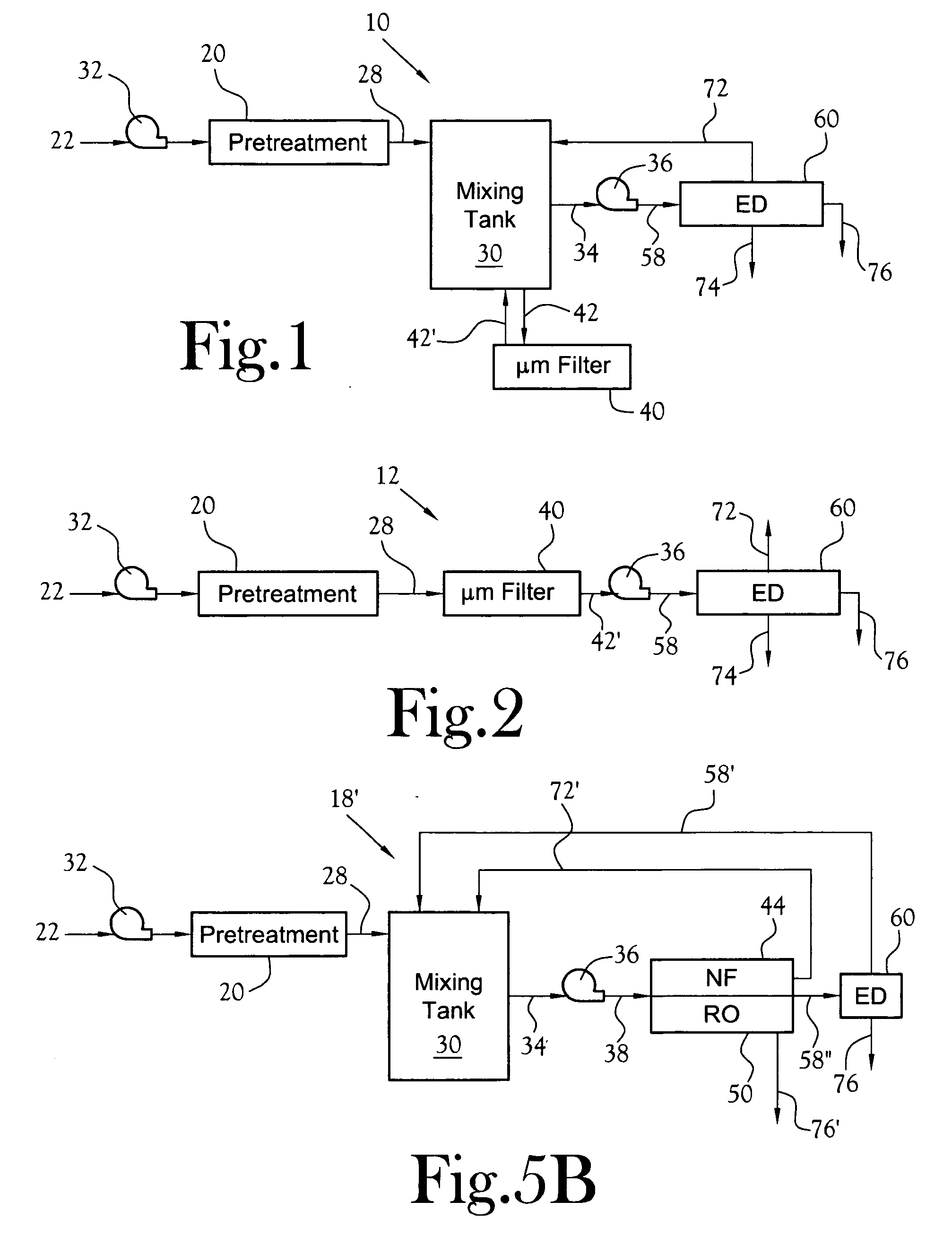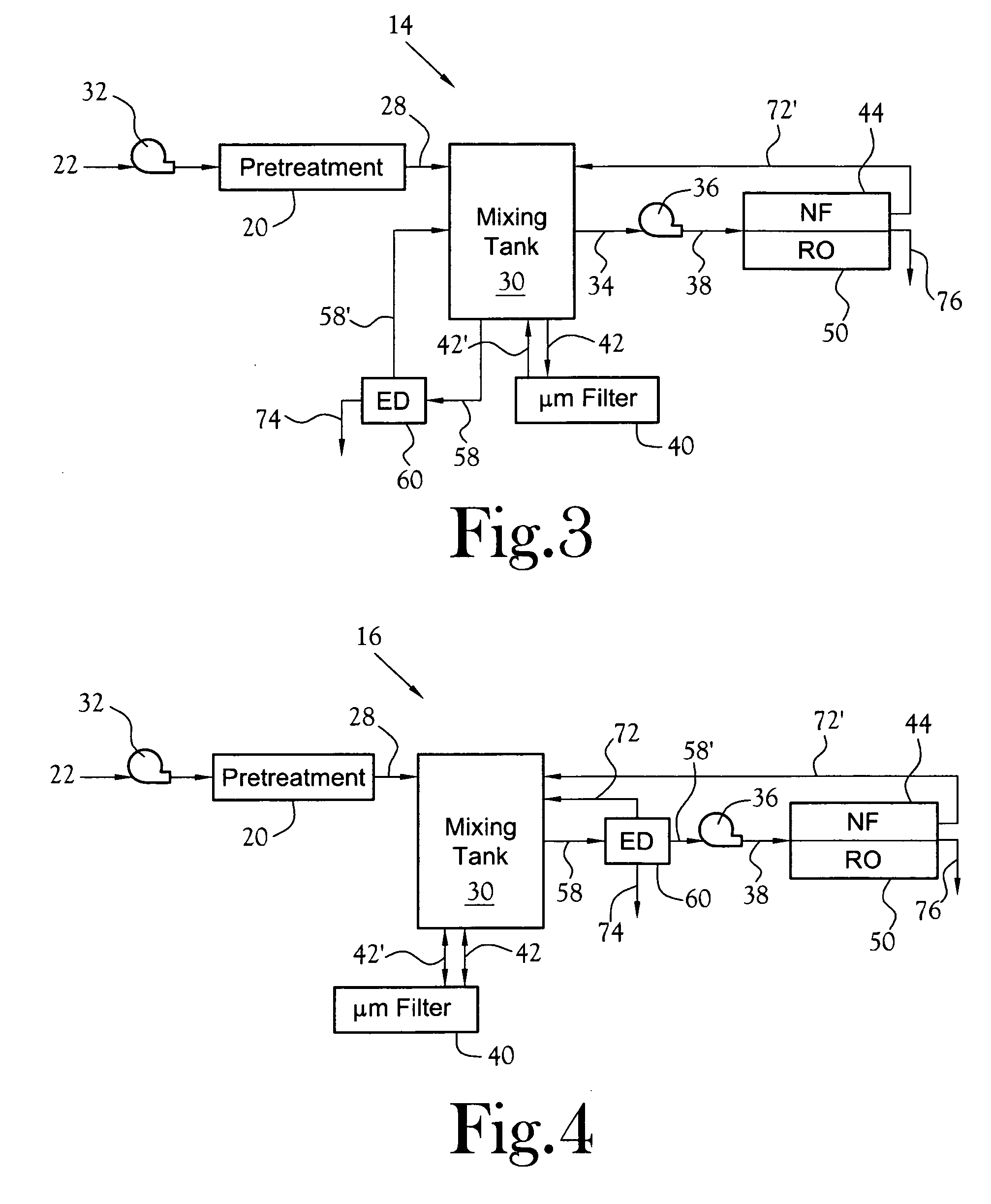NF will typically not efficiently retain or reject smaller species like
chloride and organic acids
UF, NF, and RO systems provide varying
filtration and separation efficiencies but many times may lack the ability to economically produce a deionized product liquid of sufficient quality or quantity for reuse in industry,
discharge, or municipal use; additional treatment may also be required as some components of the liquid may fall outside the operating ranges where separations are the most efficient and economically feasible for these membrane processes
NF and RO processes have been widely utilized for a range of
desalination and deionization applications, but
product recovery has a major
impact on the economics of pressure-driven membranes and limits process applicability.
Furthermore, pressure-based membranes have several inherent technical and economical limitations to achieving high feed recoveries, the most severe of which is the
osmotic pressure of the feed solution that has to be overcome by the applied hydrostatic (feed) pressure.
Although
concentration polarization can be minimized by design and operating parameters, it can never be completely excluded and must be overcome by increased applied hydrostatic (feed) pressure, particularly as feed
recovery is increased.
Overcoming high osmotic pressures and
concentration polarization resulting from higher recoveries requires not only substantial energy to produce the necessary higher pressures and flow rates but also additional investment in
capital cost for additional membrane area and pumping capacity.
It can also result in shorter useful life of the membrane due to compaction effects and enhanced
fouling that can occur at higher pressures and recoveries as a result of the concentration of scaling components near the surface of the membrane, particularly for membrane elements near the end of the process line where overall water recoveries are higher.
Enhanced
fouling increases the required frequency of membrane cleaning, increasing labor and chemical cost, and reducing
throughput.
For feeds with
total dissolved solids (TDS) levels typical of
seawater, recoveries approaching and beyond 50% are seldom feasible; for
brackish water levels of TDS, recoveries beyond 80% are rarely economical, resulting in substantial waste of pretreated feed that must be returned to the source or alternately disposed.
The design
permeate flux rate predicted at a particular
recovery likewise affects the number of pressure vessels, manifold connections, and size of membrane skid, as well as the size of the feed
water supply systems and pretreatment equipment that are necessary.
The feed flow is inversely proportional to the design recovery rate; therefore, the recovery rate directly affects the size and cost of all
process equipment and
power consumption.
However, higher recoveries can increase membrane replacement cost as a result of
fouling and compaction.
ED process stacks include limitations to constant operation at high efficiencies.
One design problem for both flow arrangements for multi-membrane and multi-
cell stacks is that of assuring uniform fluid flow to the various compartments and effective transport of the separated ionic constituents to the membrane surfaces for removal from the ED process stack.
ED also has inherent limitations, working best at removing low molecular weight ionic components from a feed
stream.
Furthermore, the concentration that can be achieved in the ED brine
stream (concentrate or “C”
stream) is limited by the membrane selectivity loss due to the Donnan exclusion mechanism and
water transport from the dilute to the brine caused by
osmosis; in particular, at very high concentrations,
diffusion of ions from the concentrate stream back into the diluate stream and transport of water across the membranes can offset separation resulting from the applied
electric potential, resulting in a poor (i.e., higher
ion concentration than desired) product.
In contrast to RO, ED becomes less economical when extremely
low salt concentrations in the product are required, as the
current density becomes limited and current utilization efficiency decreases as the feed salt concentration becomes lower: with fewer ions in solution to carry current, both
ion transport and energy efficiently greatly declines.
Furthermore, at low feed concentrations, the reduction of ionic
concentration polarization becomes an important design issue for ED membranes.
The electrolytic
water splitting is detrimental to ED process stack efficiency because of the tendency of ionic concentration polarization to occur at the
membrane surface due to the hydrodynamic characteristic of channel flow providing thin viscous boundary
layers adjacent to confining surfaces (i.e. adjacent membranes).
Ionic concentration polarization is objectionable due to an inefficient increase in
energy consumption without increasing removal of ionic constituents, requiring increased membrane area, along with
pH changes in the feed and concentrate streams due to
water splitting causing
scale deposition in ED stacks.
However, the number of cells in an ED stack is limited by practical considerations of
assembly and maintenance requirements.
Since the failure of a single electrodialysis (ED) membrane can seriously impair stack performance, the necessity to be able to disassemble and reassemble a stack to replace membranes, and the necessity to be able to perform this quickly and easily, effectively limits the number of membranes that can be practically utilized in a stack.
However, such a configuration increases capital costs and makes the process less economically feasible.
However, each process has drawbacks as discussed hereinabove, and prior utilized
hybrid systems (e.g., RO coupled with
distillation) for increased recovery have been treated as individual unit operations arranged in series sequence, with no interdependence (e.g., RO concentrate only affects operation of the
distillation unit, with no reciprocal
impact), with each individual process retaining its individual drawback (e.g., low recovery of RO, high
operating cost of
distillation.
 Login to View More
Login to View More 


